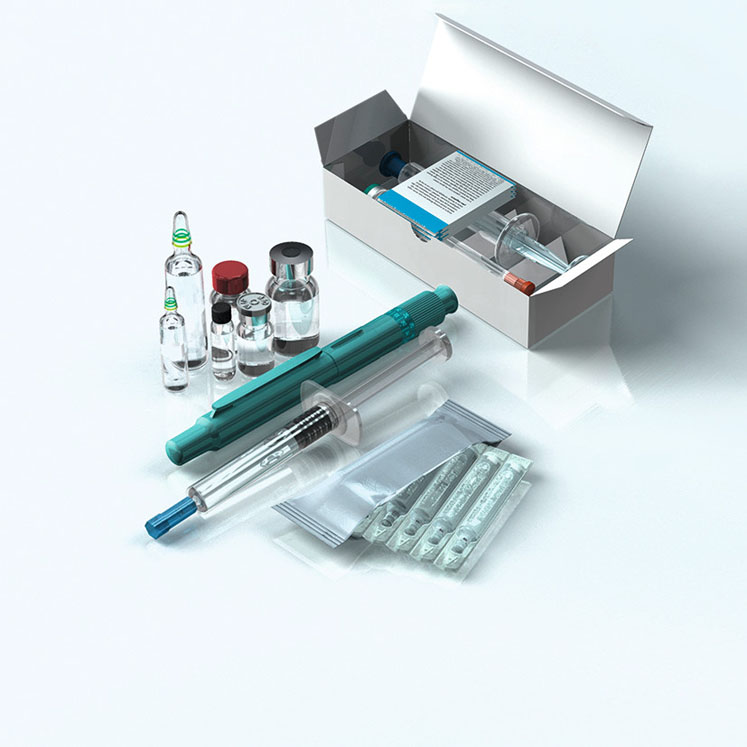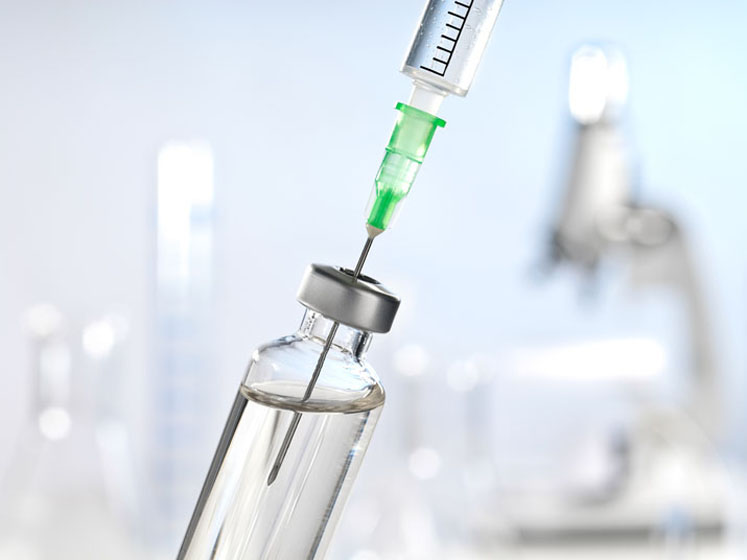Despite significant advances in biopharmaceutical manufacturing technologies, the cost of producing vaccines and biologic drugs remains relatively high. The price of these life-changing products, even when available in generic versions, remains out of reach for many people in emerging economies in Asia and Africa.
Applying process intensification and continuous bioprocessing principles, Univercells has developed a concept that allows the rapid deployment of smaller, flexible multiproduct plants to produce vaccines and biologics with significantly reduced capital and operating expenses.
Combining high containment and safety with high production capacity and reduced costs, the concept is demonstrated by the NevoLine polio vaccine production platform, which uses scale-X bioreactors for an estimated cost of US$0.30 per dose compared with $1.20–1.50 for currently available products.
Limited vaccine availability
Immunisation with properly manufactured vaccines prevents people suffering from illness, disability and death derived from a wide range of diseases, including cervical cancer, diphtheria, hepatitis B, measles, mumps, pertussis (whooping cough), pneumonia, rotavirus diarrhoea, rubella, tetanus and polio.
Although global vaccination coverage (the proportion of the world’s children who receive recommended vaccines) has been maintained at approximately 85% during the past few years according to the World Health Organization (WHO), an additional 1.5 million deaths annually could be avoided by improving global immunisation coverage.1
In 2017, WHO estimated that 19.9 million infants worldwide were not reached by routine immunisation services, with more than half of these children living in Afghanistan, Angola, the Democratic Republic of the Congo, Ethiopia, India, Indonesia, Iraq, Nigeria, Pakistan and South Africa. A separate analysis suggests that 7% of infants in the 73 poorest countries are not receiving the minimum recommended protection against infectious diseases.2
New vaccine manufacturing paradigm required
Increasing the availability and accessibility of inexpensive yet safe vaccines is a shared vision of many governments and NGOs. The Decade of Vaccines is an international collaboration dedicated to extending the benefits of vaccines to every person by 2020, and the Global Vaccine Action Plan (GVAP) has been established to ensure equitable access to existing vaccines for people in all communities.3
Vaccine supply can be increased by producing smaller quantities of vaccines locally to meet the needs of the in-country/regional population.4 However, this requires overcoming economic barriers to small and mid-scale biomanufacturing and shifting away from a long-established approach to vaccine production by large biopharma companies with centrally located, capital-intensive manufacturing facilities that provide economies of scale.
Advantages of process intensification
Process intensification and integrated continuous bioprocessing are two important enabling approaches that can be used to achieve the cost-effective, local production of high-quality biologic products, including recombinant proteins, antibodies and viral vaccines.
The intensification of traditional linear batch manufacturing enables production in less space with smaller equipment and the use of fewer resources, leading to a lower cost of goods (COGS). Intensified processes in smaller facilities drastically reduce time and cost to market, and a modular nature allows for easier implementation and replication at multiple locations.
The flexibility of this approach permits more or less vaccine to be produced by extending or reducing the duration of the manufacturing campaign, allowing rapid response to changes in market demand or the emergence of a pandemic disease.

Perhaps as significant is the position of regulatory bodies around the globe. Most encourage the adoption of process intensification with a view towards continuous manufacturing as a means to achieve consistent and robust processes that yield safe products.
The Univercells concept
Univercells was founded to reduce the capital expense, COGS and footprint of biopharmaceutical manufacturing while still providing high containment, safety and flexibility for vaccine and biologic drug production.
The company is focused on intensifying the entire process train to decrease the size of the equipment, cleanrooms and overall facility, reducing the CAPEX and operating costs associated with bioprocessing. The concept delivers safer, faster and closed bioprocessing in a much smaller footprint. Through intensification and chaining of unit steps into a semi- or fully continuous process, users can achieve high yields with less time and money invested.
Within the NevoLine biomanufacturing platform, individual microenvironments such as isolators or biosafety cabinets integrate a low-footprint and automated process with minimal manual operations and closed operating conditions for enhanced process robustness and environmental safety. The approach entails the following:
- intensification to enable equipment size reduction
- chaining of the equipment into a semi- or fully continuous format to automate the process, reducing utilities, footprint, time and operator interaction
- low-footprint process and equipment that can be incorporated into various facility designs (conventional cleanroom, modular facilities, containers/pods, etc.) while enhancing biosafety and ensuring GAP III compliance
- the ability to construct from new or to revamp existing facilities.
Implementation: NevoLine for sIPV production
The continuous processing of lytic viruses is challenging because 3–10 days after infection of the culture cells with the virus, the virus kills the cells. The intensified, high-cell-density scale-X bioreactor with chained downstream purification steps can be operated for a limited timeframe (two-week cycle) while realising the benefits of continuous manufacturing.
Initial development of the NevoLine platform was funded in part by a $12 million Grand Challenges grant from the Bill & Melinda Gates Foundation to deliver affordable inactivated polio vaccine (sIPV). The specific sIPV production platform comprises three linked cabinets for sIPV production, purification and inactivation.

The platform is modular; however, the order can be rearranged and/or additional modules can be incorporated depending on the product and process needs. Importantly, widely used cell substrate (WHO Vero) and attenuated polio strain are employed in the process to minimise any regulatory constraints.
The first cabinet houses a scalable, single-use fixed-bed scale-X bioreactor with a high-density packed support matrix for high cell densities and high volumetric productivity in a small footprint. Conditions in the bioreactor are similar to those in static plasticware, but with a homogenous environment. Automated sensors and pumps for media addition and parameter adjustment ensure consistent operation.
The bioreactor is operated in perfusion mode, and buffer addition occurs from outside the cabinet prior to infection. The harvest is filtered as it leaves the bioreactor and then subjected to inline concentration via tangential flow filtration (TFF). The cabinet is operated at negative pressure to minimise the risk of operator exposure.
In the second cabinet, inline clarification and purification of the virus take place. Preconcentration and preclarification make it possible to perform polishing in one-step chromatography using a mixed-mode column and chromatography membrane developed by Natrix (now Merck), significantly reducing the size and cost of this unit operation. Inline dilution and inactivation are performed in the third cabinet under controlled environmental conditions.
In the laboratory system, high cell densities and viral titres have been confirmed for high-volume, low-cost viral vaccine production.
Reproducible cell growth, cell density and infectivity have been observed for all three serotypes in a bioreactor decreased in size by a factor of 25–50 compared with reference processes.5,6 Good removal of host-cell proteins and host-cell DNA has also been demonstrated, as has very high antigen recovery.
In application, a facility with four NevoLine platforms is projected to produce 50 million doses of polio vaccine per year at a cost of <$0.30 per dose, compared with $1.20–1.50 for vaccines that are produced today. The target CAPEX for the platform, with a small footprint of approximately 1500 sqm, is below $30 million. This compares with a traditional ~5000–10,000 sqm vaccine manufacturing plant, which costs around $200 million to construct.
Future applications
Supported by a $4 million grant extension by the Bill & Melinda Gates Foundation, Univercells has been working with Batavia Biosciences to scale-up the sIPV process in the NevoLine platform from laboratory to commercial-scale production employing a 150 sqm scale-X nitro bioreactor.
The large-scale NevoLine platform will be delivered in a full package, including process and equipment transfer, team training and clinical and regulatory support. Delivering a turnkey solution will drastically reduce time-to-market and foster the accessibility of affordable vaccines.
The development of NevoLine processes for the manufacture of other viral products is also under way. Based on Univercells’ novel scale-X bioreactor and inline product concentration, the platform can easily be adapted to a wide range of cell lines and viral products such as vaccines and vectors for gene therapies.
For instance, Univercells recently announced leveraging the NevoLine platform for the production of measles and rubella vaccines, supported by a second grant from the Bill & Melinda Gates Foundation. The renewed interest from the Foundation is yet another confirmation of the platform’s capacity to transform biomanufacturing and have an impact on global health.
References
- www.who.int/news-room/fact-sheets/detail/immunization-coverage.
- S. Berkley, “Immunization Needs a Technology Boost,” Nature 551, 273 (2017): doi: 10.1038/d41586-017-05923-8.
- www.gatesfoundation.org/What-We-Do/Global-Development/Vaccine-Delivery.
- www.path.org/articles/supporting-vaccine-manufacturers-supply-critical-vaccines.
- Y.E. Thomassen, et al., “Next Generation Inactivated Polio Vaccine Manufacturing to Support Post Polio-Eradication Biosafety Goals,” PLoS ONE 8, 12 (2013). doi: 10.13712013.
- A.M. Bakker, et al., “Inactivated Polio Vaccine Development for Technology Transfer Using Attenuated Sabin Poliovirus Strains to Shift from Salk-IPV to Sabin-IPV,” Vaccine 29(41), 7188–7196 (2011).




